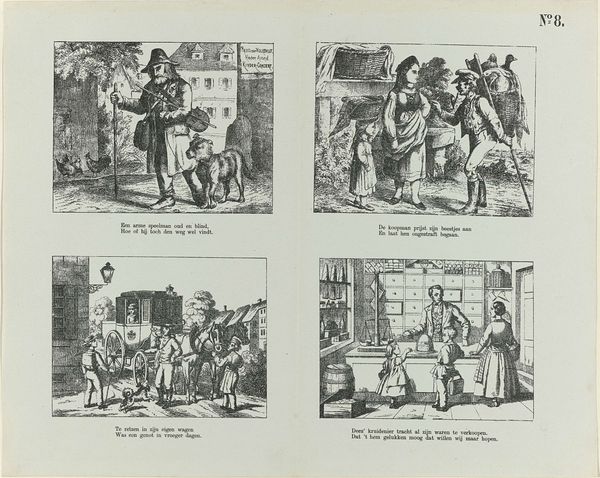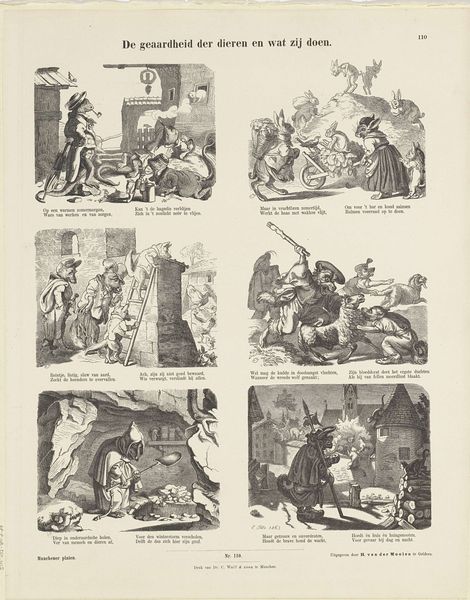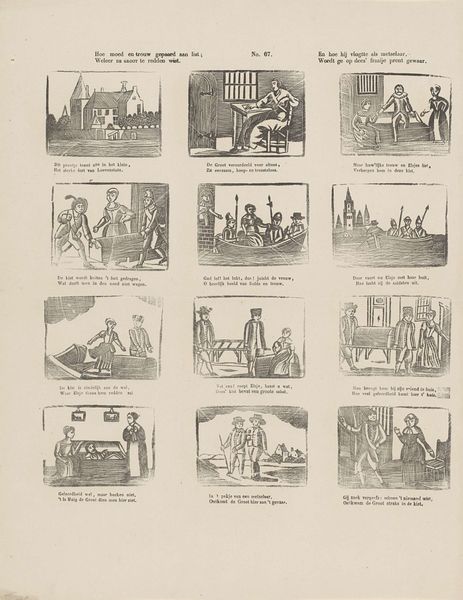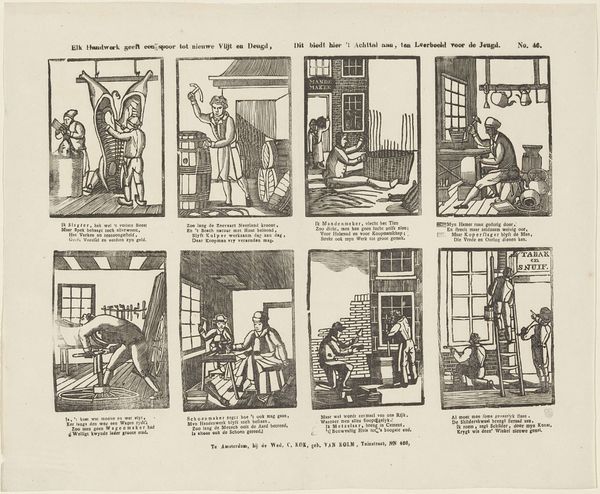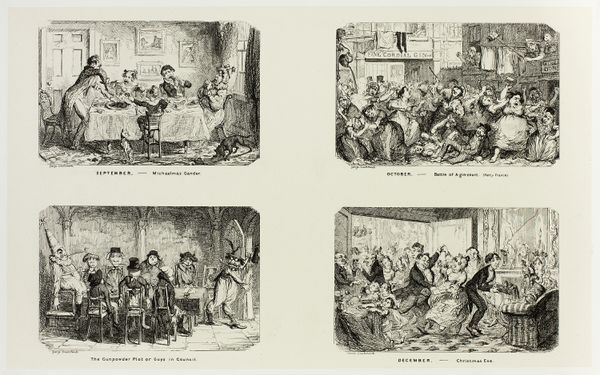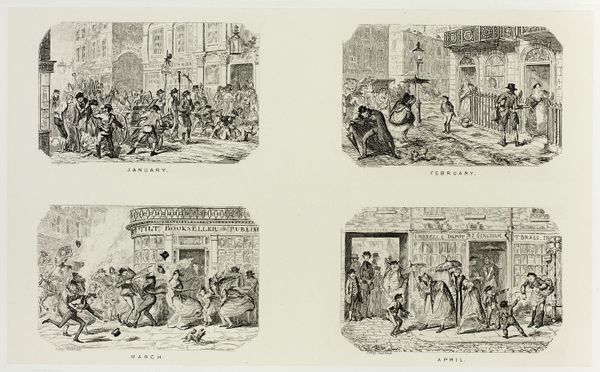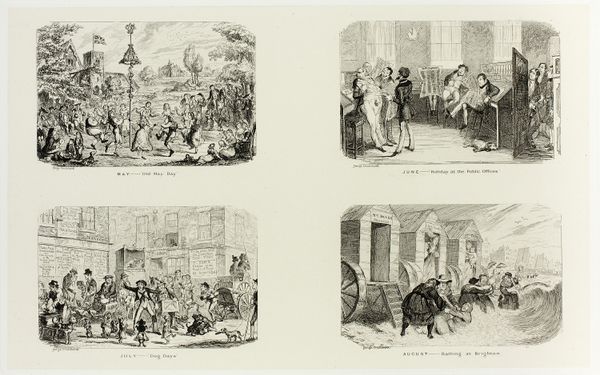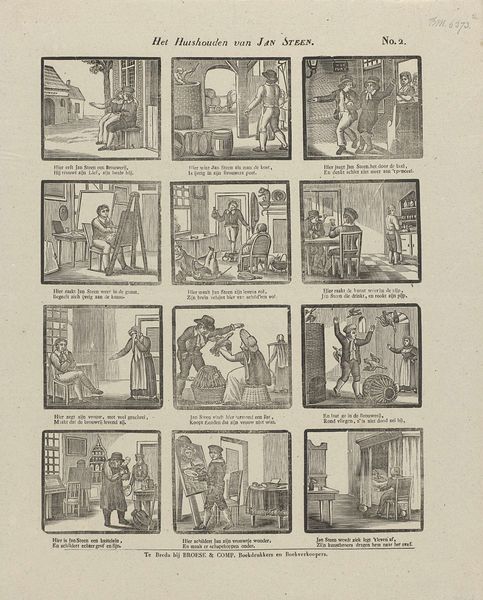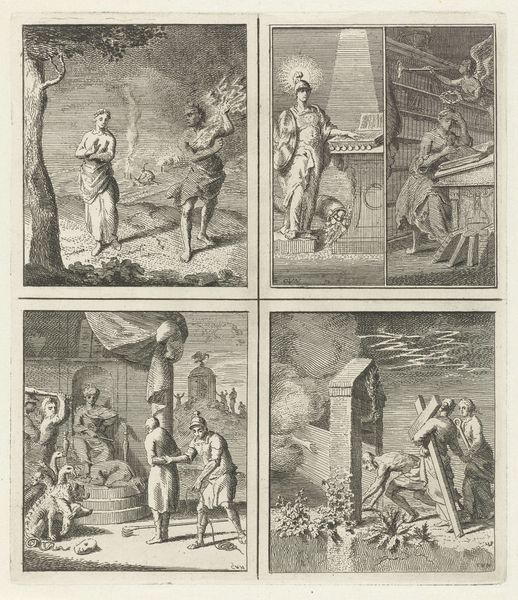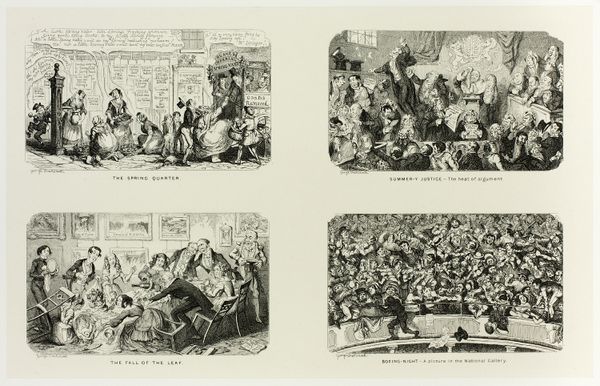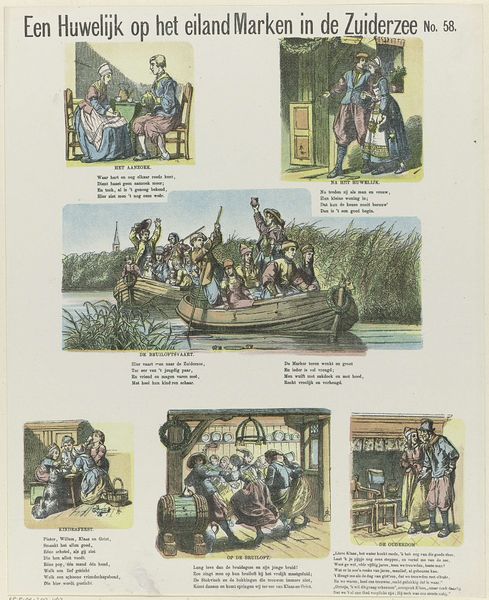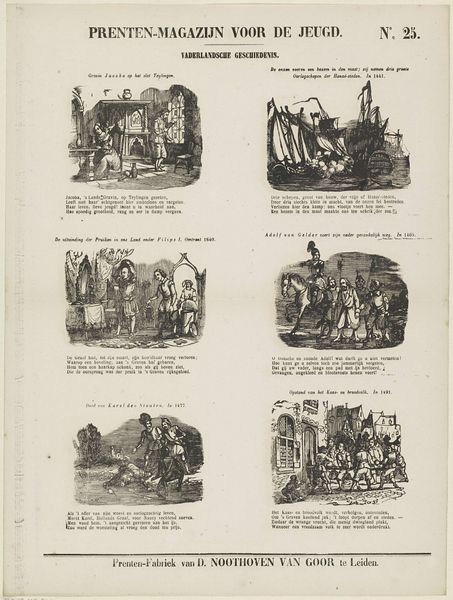
drawing, print, engraving
#
drawing
#
comic strip sketch
#
narrative-art
# print
#
landscape
#
junji ito style
#
cartoon sketch
#
personal sketchbook
#
sketchwork
#
pen-ink sketch
#
pen work
#
sketchbook drawing
#
cityscape
#
genre-painting
#
storyboard and sketchbook work
#
sketchbook art
#
engraving
Dimensions: height 428 mm, width 349 mm
Copyright: Rijks Museum: Open Domain
Editor: So, this is “Ambachten,” or “Crafts,” from 1873 by De Ruyter & Meijer. It's an engraving, and it kind of looks like a page from a children's book showing different artisans at work. What strikes me is how much emphasis is placed on manual labor and craftsmanship. How do you interpret this work? Curator: The print offers a glimpse into the means of production and the social organization of labor in the late 19th century. Notice how each scene depicts a different trade, like coopering, carpentry, or blacksmithing. What materials are being used in each trade? Editor: I see wood, metal, leather...basic, raw materials. Curator: Exactly. These materials were transformed through skilled labor. Think about the social context: these aren't idealized representations of artistry; they're glimpses into the everyday lives and workplaces of ordinary people. What does this suggest about the intended audience or the broader function of the print? Editor: Maybe it was meant to educate or inform people about different trades? Or even to celebrate the value of hard work? Curator: Precisely. This piece exists at a nexus of craft, commerce, and social hierarchy, urging us to contemplate both production's gritty materiality and its cultural implications. Editor: I never really considered the social aspect of these kinds of images. Thanks for offering that context! Curator: Considering how even simple drawings are products of the culture they come from definitely offers a new way of seeing.
Comments
No comments
Be the first to comment and join the conversation on the ultimate creative platform.
